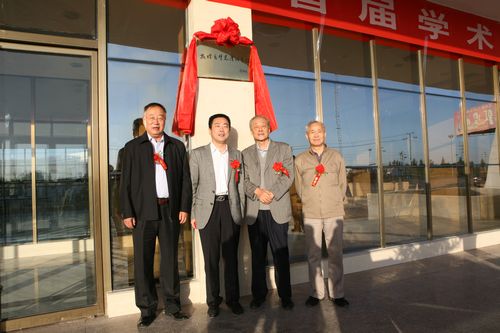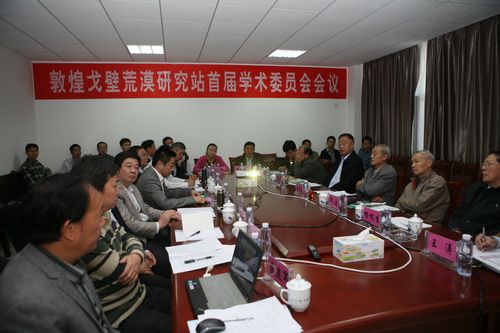The Gobi Desert Station of CAS Has Been Established in Dunhuang, Gansu Province
Updatetime:2013-10-09From:
【Enlarge】【Reduce】
The Gobi Desert Station of CAREERI (Cold and Arid Regions Environmental and Engineering Research Institute), CAS has been established in Dunhuang, Gansu province on Oct. 7, 2013, and the 1st academic committee of the station was held in Dunhuang. CAS Members and scientists from CAREERI, Lanzhou University and Lanzhou Branch of CAS attended the opening ceremony and the academic committee.
Prof. Qu Jianjun, who is Director of the Gobi Desert Station, introduced the research station was co-constructed by CAREERI and the Science and Technology Bureau of Dunhuang. The research directions of the station include the processes of earth’s surface in extremely arid regions, the aeolian sand disaster, the ecological environmental degeneration in extremely arid regions, and the countermeasures and technologies of the desertification prevention and control. The station will focus on the researches of aeolian erosion in arid desert regions, the transportation and environmental effects of aeolian sand, and layouts and modes of desert improvement. In addition, Prof. Qu also introduced the sand prevention engineering of Mogao Grottoes in Dunhuang, laws of the sand hill movement in Singing Sands Mountain, the aeolian erosion observation of Yardang landform and the coastal sand prevention, which are major research programs of the station.
There are many world-famous natural and cultural heritages in Hexi Corridor of Gansu, such as the Mogao Grottoes, Singing Sands Mountain, Crescent Spring and Yardang landform, and so on. Therefore, the establishment of the station has not only important theoretical values but also the important practical significant for the protection of natural and cultural heritages.

CAS Members and scientists attended the opening ceremony

The meeting site
Appendix




